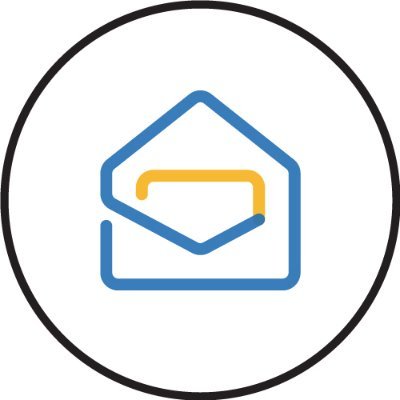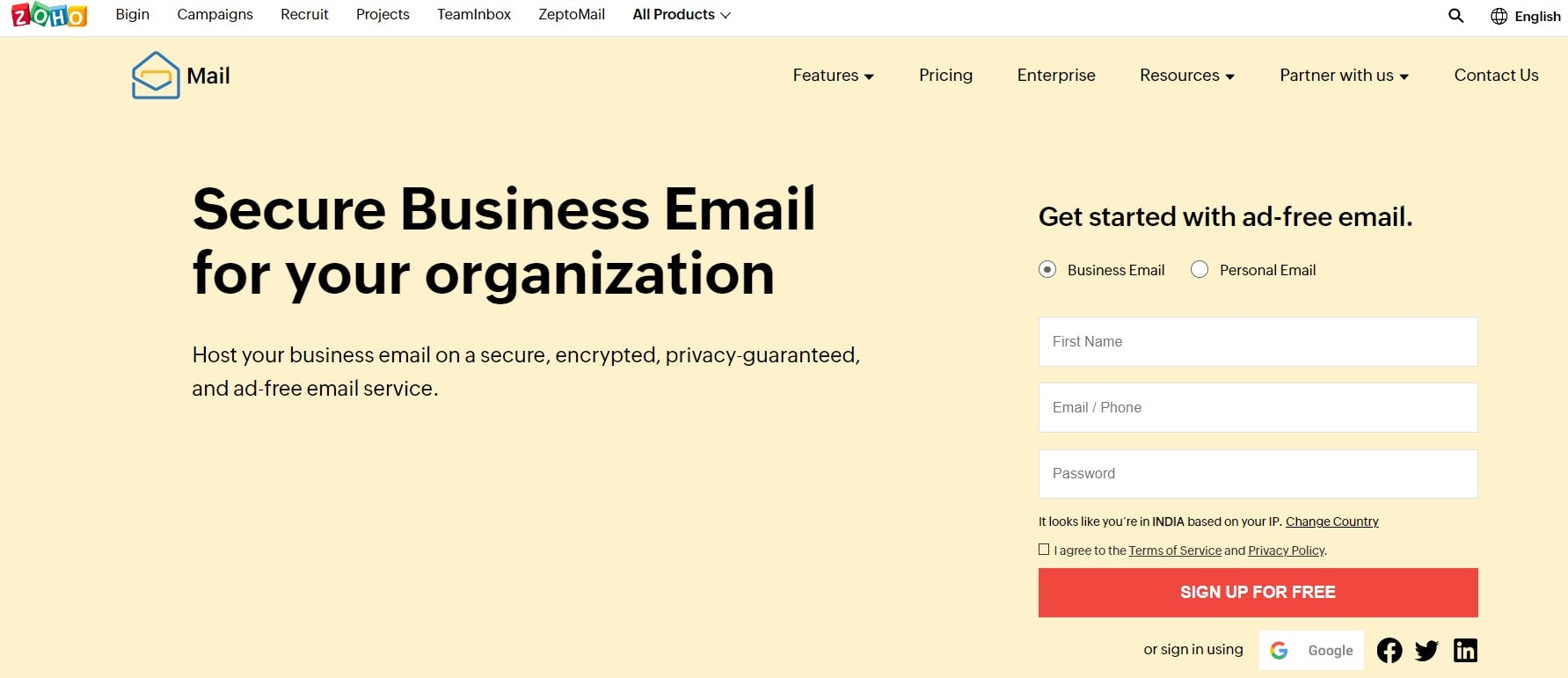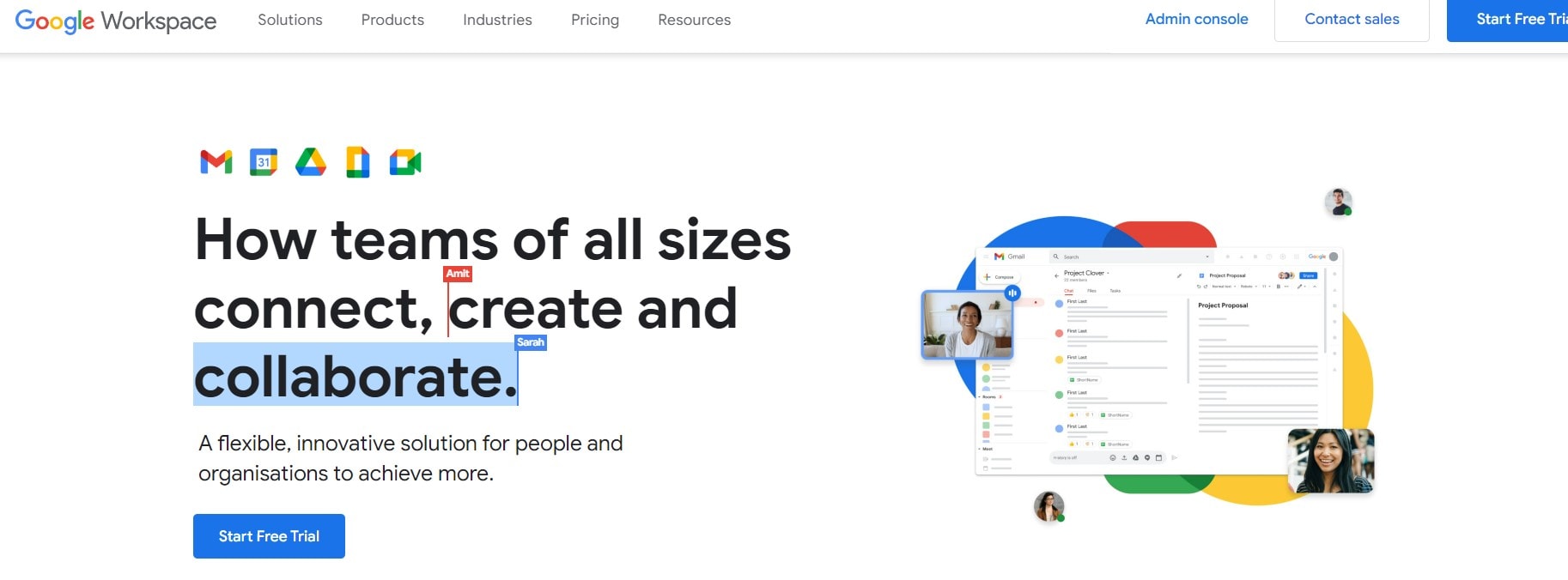Word Documents
Zoho Docs
Users like Zoho Docs for its top-notch online editing features, simple sharing and teamwork features, and connectivity with Dropbox, Google Drive, and Adobe Sign.
There are two options available when buying Zoho Docs separately. Both primary and deluxe. You get a free plan trial for 25 users that lasts 15 days. Unlimited file and folder sharing, desktop synchronization, editing features, and undermanagement are all included in Zoho Docs’ free plan.
All regular functions are included with the $8 monthly Premium fee per user, including the option to send documents straight from a Zoho account. For $5 per user per month on the Standard subscription, you get file and folder sharing, password-protected documents, and standard editing tools.
You may work with your team and share papers in Zoho Docs. You may add tasks if you need to submit documents to a colleague for evaluation or correction. When you delegate a task to a colleague, a notification and a link to the paper are sent to the recipient. Additionally, Zoho provides an abundance of templates. In addition to cover letters, resumes, and other things. Google Docs from G Suite and Zoho have a lot in common.
With Zoho Docs, you can add fillable fields and integrate code for a more contemporary look and feel. Zoho Docs does not provide a free plan; nevertheless, if you upload files larger than 1 GB with more than 25 users, you will be charged for a different method.
Google Docs
Google Docs are notable for their elegance and simplicity. It is quick and straightforward to use. Docs’ applications and features are easily accessible and simple to use. For instance, changing their standard text, different titles, headers, and paragraph styles is simple.
You will be notified of recent changes and the whole document history when you collaborate on a document and access it after someone updates it. Recently, a fun new function called “Explore” was implemented.
This feature will provide information and recommendations based on what is now visible in your work. For instance, clicking the Explore button on the page will allow you to make recommendations and ask questions about your data. Google excels at making spelling predictions in spell check.
It anticipates what you will type or write next, which is helpful. You may also change the parameters for your spell check. You may download DOCX, ODT, RTF, and PDF files in various formats to your computer, much like Zoho Docs.
In addition, Google Docs is renowned for its library of newsletters, resumes, and template galleries. The primary difference, in my opinion, between Google Docs and Zoho Docs is that Google Docs is free while Zoho Docs is not, as you can see from the comparison of the two document services. They have a free subscription. However, it lacks the same functionality and access as Google Standard Docs.
Email
Zoho Mail
The basic plan of hosted email provider Zoho Mail, which costs $1 per user per month, comes with 5 GB of storage. It is an email system that is entirely functional and has inbox technology.
The business applications that Zoho Mail interacts with make it so wonderful. With applications that focus on finance, project management, sales, and marketing, they may combine and work together. They include anti-spam measures to prevent your inboxes from getting clogged with spam, like most email service providers.
However, some customers claim that the service does nothing further beyond classifying emails as spam, in contrast to Google, which does a fantastic job of guarding users’ inboxes against dubious links and issuing additional cautions. The goal of Zoho Mail is to become the preferred email service for small and medium-sized enterprises. They hope to increase users’ productivity with robust calendars, tasks, bookmark capabilities, and notes.
Gmail
You are probably already aware of Gmail’s free version. Still, the company also provides Gmail for business, which enables you to send and receive emails from a domain associated with your organization.
This version of Gmail is licensed under the G suite umbrella. They will include a variety of additional productivity tools and features as part of a monthly subscription package. Since Gmail is integrated with G Suite, all the tools are available in all three price tiers.
They provide a basic plan for $6 a month per user. An enterprise plan costs $25 per user per month, and a business plan costs $12 per month. By offering all of its services independent of the selected program, Gmail stands apart from the competition.
The features and restrictions of each tool vary based on the plan, which is where the differences between the plans lie. Before committing, G Suite provides a free 2-week trial of the package you’re interested in.
Spreadsheets
Zoho Sheets
The Zoho Docs package includes Zoho Sheets. Most users claim it is a perfect match for Google Sheets from G Suite. Documents from Google Drive, Box, Dropbox, and OneDrive may be imported and exported.
You will preserve documents in your Zoho account if you cannot delete them. When working together, your team members may edit the same document simultaneously, make comments and responses, and communicate.
Due to its ability to import and export data, Zoho Sheets also integrates with other CRM platforms. Zoho Sheets interacts and integrates internally with all of their products that go under their document products in addition to working with external integration.
Google Sheets
The cloud services offered by G Suite are all seamlessly integrated with Google Sheets. The file content is stored on Google’s web servers, similarly to their Docs.
You may create shortcuts that open the relevant file in the browser when you sync your files with your desktop. Excel-compatible files may be easily imported and edited. You won’t lose any of your most recent modifications since real-time saving is used for all changed documents.
Each component of Google Sheets is entirely functional and set up with a straightforward interface, a traditional menu, and a horizontal toolbar for frequently used capabilities. Online team communication is still as powerful as it has always been for G Suite services.
Each user has access to a chat area that enables quick communication between individuals with the necessary permissions to modify the document and a colored Sheets cursor. Another time-tested tool in the G Suite lineup that you can’t go wrong with is Google Sheets.
Presentations
Zoho Show
A web-based presentation tool with real-time collaborative capabilities is called Zoho Show. Users may add words, photos, graphics, tables, charts, and videos to their presentations to make them more unique.
Animated modifications are also possible for slides. Importing and exporting files is also supported by Zoho Show.
It can read presentations stored in various file types and save them in the right location on your desktop. The application may publish presentations in open channels and embed them in blogs, forums, and webpages as part of its public sharing feature.
They provide a variety of pre-made themes for presentations as well as features that you may customize. They do a fantastic job of providing features that will please individual and corporate users.
When used as a standalone tool, Zoho Show requires payment. Visit their website to find out more about their prices.
Google Slides
The finest free presentation software available is often regarded as Google Slides. It is simple to learn and use, with powerful collaborative features and a free slideshow maker. Users wished Google Slides had features like video export, audio import, and desktop apps, among other things.
The best part about Google Slides is that there is no software to download or install, and you can start using them immediately.
You may begin as long as you have a Google account. Some unique features of Slides include creating URLs where audience members may ask you questions in real-time. They provide top-notch slide-making, presentation, and collaboration options.
Cloud and Document Storage
Zoho WorkDrive
Zoho WorkDrive is renowned for being a trustworthy and secure platform for file management, collaboration, and storage. It is intended to serve small and midsize enterprises and enables workers to collaborate whether or not teams are present.
The other Zoho services in their Suite are also available to users with this tool. WorkDrive is designed to replace the need for clogged email inboxes by organizing and distributing files with the right people.
You may rapidly and readily share information between coworkers without compromising data security or privacy. Sending links quickly presents difficulties for certain people.
Although the procedure isn’t always smooth, WorkDrive is favored for its simple data management, sophisticated admin controls, accessibility on any device, and simplicity of sharing and collaborating on files.
Zoho provides three price options. Team, business, and starter. Visit this page for additional information on these plans.
Google Drive
One of the most excellent cloud-based storage and synchronization services is Google Drive. You can’t go wrong with Google Drive since it is free. Documents may be created, edited, stored, and worked on collaboratively.
Businesses can conserve space and avoid duplications on the local storage drive by allowing users to choose any folder in the campaign to back up on the computer. You should note that Google Drive is free until you want more than 15GB of data; in this case, you should consider the Google One price plan.
You may upload files, convert them to the format required, and edit them in real-time. You may update them online, whether they are new papers, spreadsheets, or slide shows.
Integrations with external services go without a hitch. A list of services that work well with Google Drive is available. Google Drive is ultimately the most excellent option for online cloud storage due to its compatibility, affordability, and integration.
Security & Privacy
Google Workplace and Zoho Workplace are comparable in terms of security. Regardless of which software suite you pick, you can sleep well knowing that your data is safe since both include two-factor authentication, data encryption at rest and in transit for file storage, encryption at rest for email, and TLS encryption.
The only time things start to become murky is when we consider privacy. As we’ve previously discussed, Google has a somewhat ambiguous privacy policy, and the business has come under fire for its user monitoring and data harvesting methods.
In contrast, Zoho asserts that it has never sold user information to advertisers and provides a detailed explanation of how it gathers and uses user data. While this shouldn’t deter potential users from adopting Google Workspace, it is undoubtedly something to consider when selecting a collaboration tool.
Technical Support
Knowing that the business has your back once anything goes wrong with your software is critical. You may reach a professional at G Suite’s customer support through phone numbers and contact centers in the US who will help you with any problem or technical difficulties.
You may easily report problems online through their email systems and get a response in 1–2 days. If your problem is small or you don’t have the time to call, this is ideal.
Because the firm isn’t American-based, Zoho’s customer care division is much smaller and has fewer locations here. So, if you value customer care from people who understand your language, I’d choose G Suite.









